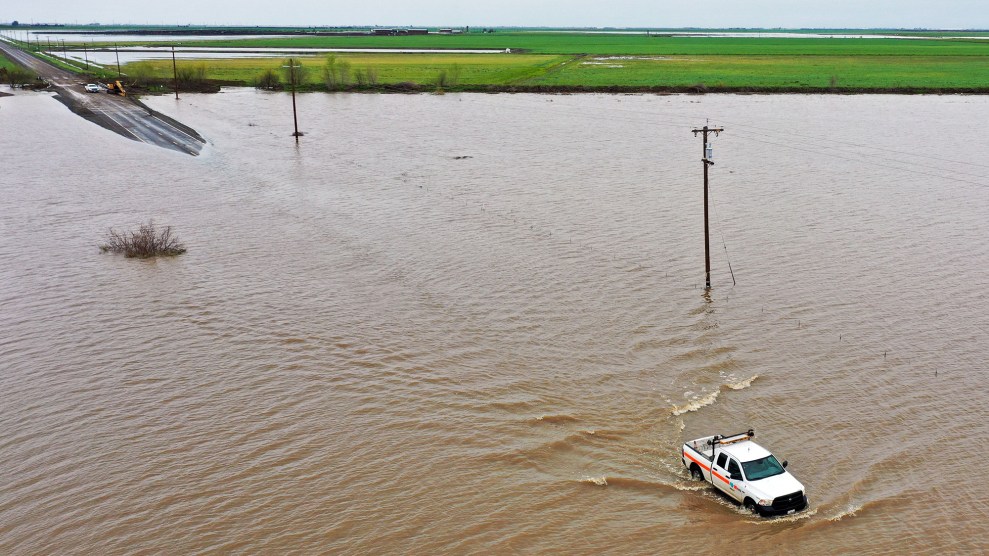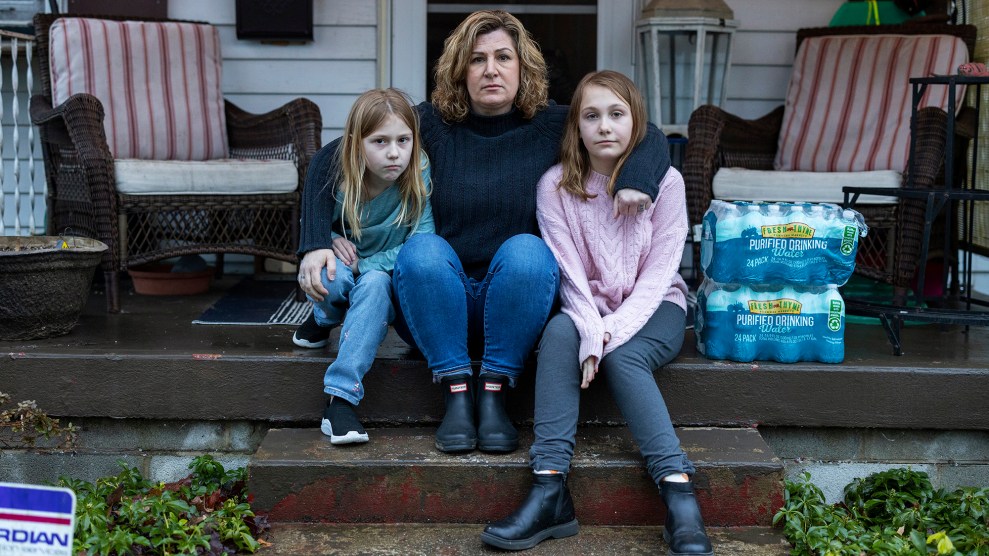In Lorena Roman’s new apartment in Watsonville, California, the walls are bare except for a wooden cross. Boxes are stacked in the small kitchen. Some days she can hear the jingle of an ice cream truck driving by the approximately 80-unit apartment complex in Monterey County. On a recent spring morning, Roman, 47, sits on her newly donated, dark brown couch next to her 70-year-old mother, Carmen. They passed tissues to each other, wiping away tears. “I didn’t invite the river into my home,” says Roman, recalling the night of March 11 when the family evacuated their home of 47 years in the neighboring town of Pajaro.
This past winter, California saw an unprecedented amount of rain, costing the state more than $30 billion in damage. In Pajaro, a small town of approximately 3,500 residents, 96 percent of whom identify as Latino, the unusual amount of rainfall during December drew concern. In January, after another storm, Monterey County issued an evacuation warning for Pajaro residents. It turned out to be a false alarm. Then, in the middle of the night on March 11, rain poured down once more: Roman and her family, along with hundreds of other residents, were awakened by city sirens and first responders banging at their doors, ordering them to evacuate. Overnight on the Pajaro River—which divides Pajaro and Watsonville in Santa Cruz County—a levee broke, causing a devastating amount of water to flood the town, displacing about 1,700 residents.
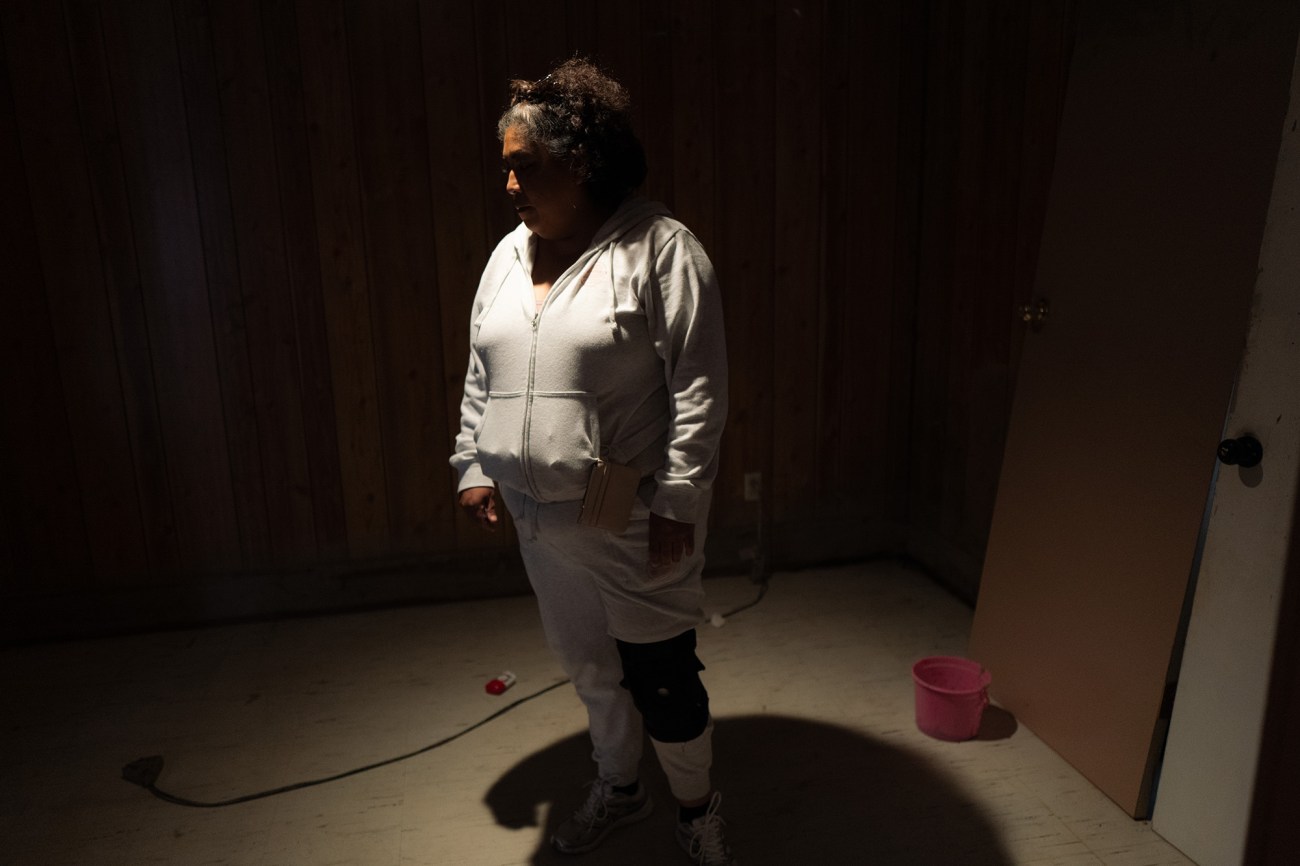
Lorena Roman inside the empty room in her Pajaro home that she shared with her siblings growing up.
“My mom lost it,” Roman says recalling the night they were evacuated. “She kept saying over and over: ‘This can’t be happening again. This can’t be happening again.’” She was referring to a similar flood in 1995, when Roman was 17. Once again, they fled, frantic and in disbelief.
The county provided a temporary shelter for residents at the Santa Cruz Fairgrounds in Watsonville, but Roman decided not to use it. Her mother’s health was poor. Carmen suffers from a chronic artery condition and is recovering from surgery after being struck by a car less than a year ago. Roman’s 15-year-old daughter, Star, has autism; congested spaces and large crowds cause her severe anxiety. “We couldn’t go to the fairgrounds,” says Roman. “I needed to take care of my family’s well-being.” Roman is the primary provider for the family, which includes not only her mother and daughter but also her nephew and brother.
Roman used her tax return money to check the family into the Motel 6 in Watsonville for five nights. The family would end up sharing the double hotel beds for fifteen nights. Eventually, Roman took her cousin Juan up on an offer to stay with him. “My initial thought was not to disrupt my cousin’s home,” says Roman. But Juan insisted and reminded Roman she needed to save for a deposit on a new apartment. Roman and her family spent eight days with her cousin until residents were allowed back into Pajaro.
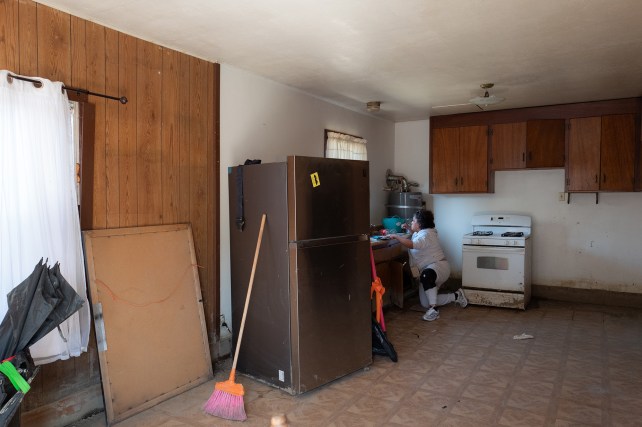
Roman checks the leaking sink in the kitchen of her Pajaro home.

A red notice is hung outside Carmen Roman’s home identifying the property to have been severely damaged.
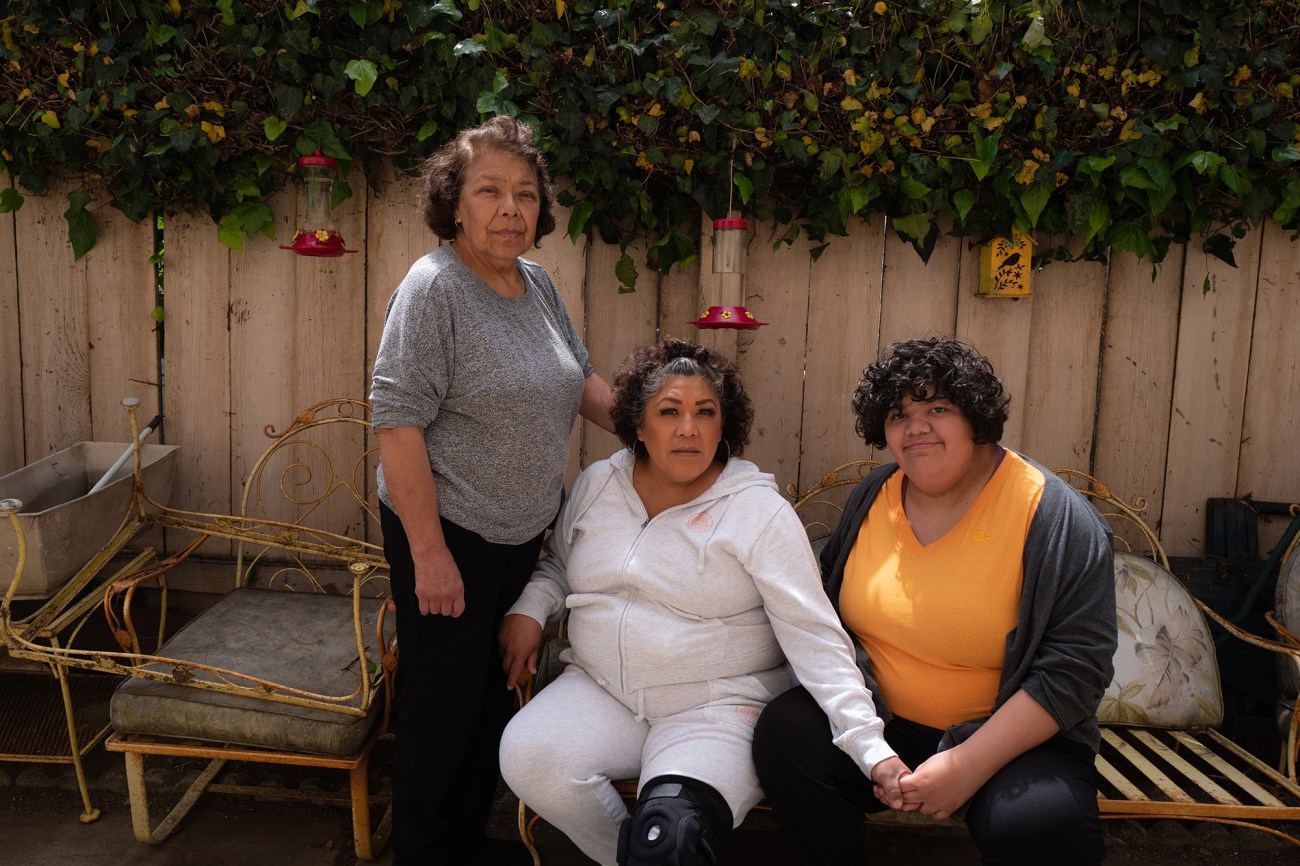
Carmen Roman and Lorena Roman and Lorena’s daughter, Star
The Village Trailer Park, at the south end of town, is mostly a community of current and retired farmworkers. Among them are Cristobal Ayala, 78, and Elvira Fernandez, 73, who live with their disabled son. After being evacuated in the middle of the night, they slept in their car. The next morning, the family moved into the Fairgrounds, but a few days later, they contracted Covid. They spent four days in the local hospital and were then relocated to a hotel that was paid for by the county.
Now that they are back in their home, the mud from the storm has been cleaned up, but the smell of mold remains. “We have to throw away what we can no longer save,” says Fernandez as her daughter begins putting clothes in duffle bags. The couple has been getting by with what their social security checks provide.

Herardo Sanchez and his sons, Geovani (left) and Issias (right)

Pancho Zomara Rocha and Gloria Hernandez De Zomara in front of their home.
Their neighbors Pancho Zomara Rocha, 87, and his wife, Gloria Hernandez De Zomara, 74, were also dealing with the aftermath of the flood. Married for 50 years and originally from Michoacan, Mexico, the couple has worked in Pajaro’s strawberry and blueberry fields for most of their lives. They lived through the ’95 flood but say the response from the Federal Emergency Management Agency was different in those days. “Back then, the day after the flood, you had federal officials helping the community the very next day,” says De Zamora sitting on her walker outside her trailer home. “This time the help has been slow, and it took FEMA a long time to arrive.”

Pajaro residents clear their homes of damaged valuables after the flood
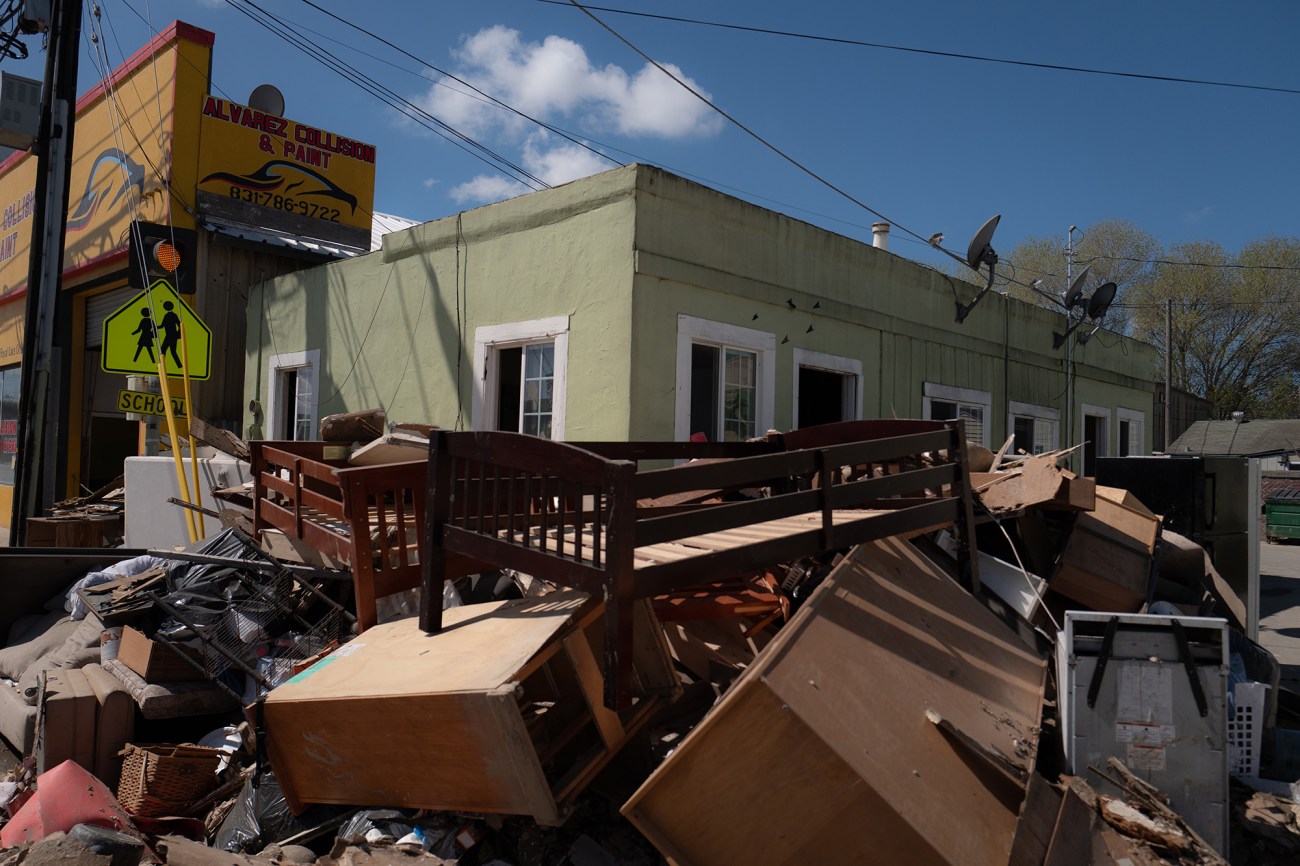
Piles of furniture and belongings are left on the sidewalks for the city to pick up.
As local organizations, churches, and volunteers mobilized to clean up and rebuild the community, residents felt abandoned by the federal government. Pajaro residents held protests asking, “Where is FEMA?”
On Monday, April 3rd, President Joe Biden approved the Major Disaster Declaration for California to counties affected by the storms. Still, processing has been difficult for some residents of the trailer park. The FEMA inspector who came to the park spoke English only to a mostly Spanish speaking community. De Zomara tried to tell him the ground-level back room, separate from her trailer, suffered damage from the flood and that her washer and dryer were a complete loss. But afterward, “I received a check in the mail from FEMA for $200,” she says. “What is that going to cover?”
Across the street, Heraldo Sanchez, and his wife, Marta Ayala, also struggled with the language barrier. “Why do they send someone who doesn’t speak Spanish?” Sanchez asks. “We waited all day for him. We missed a food donation waiting.” Ayala and Sanchez have worked in the blackberry fields for more than twenty years, but since the winter storms, they have been unable to find work.

Residents of Pajaro protest asking, “Where is FEMA?”
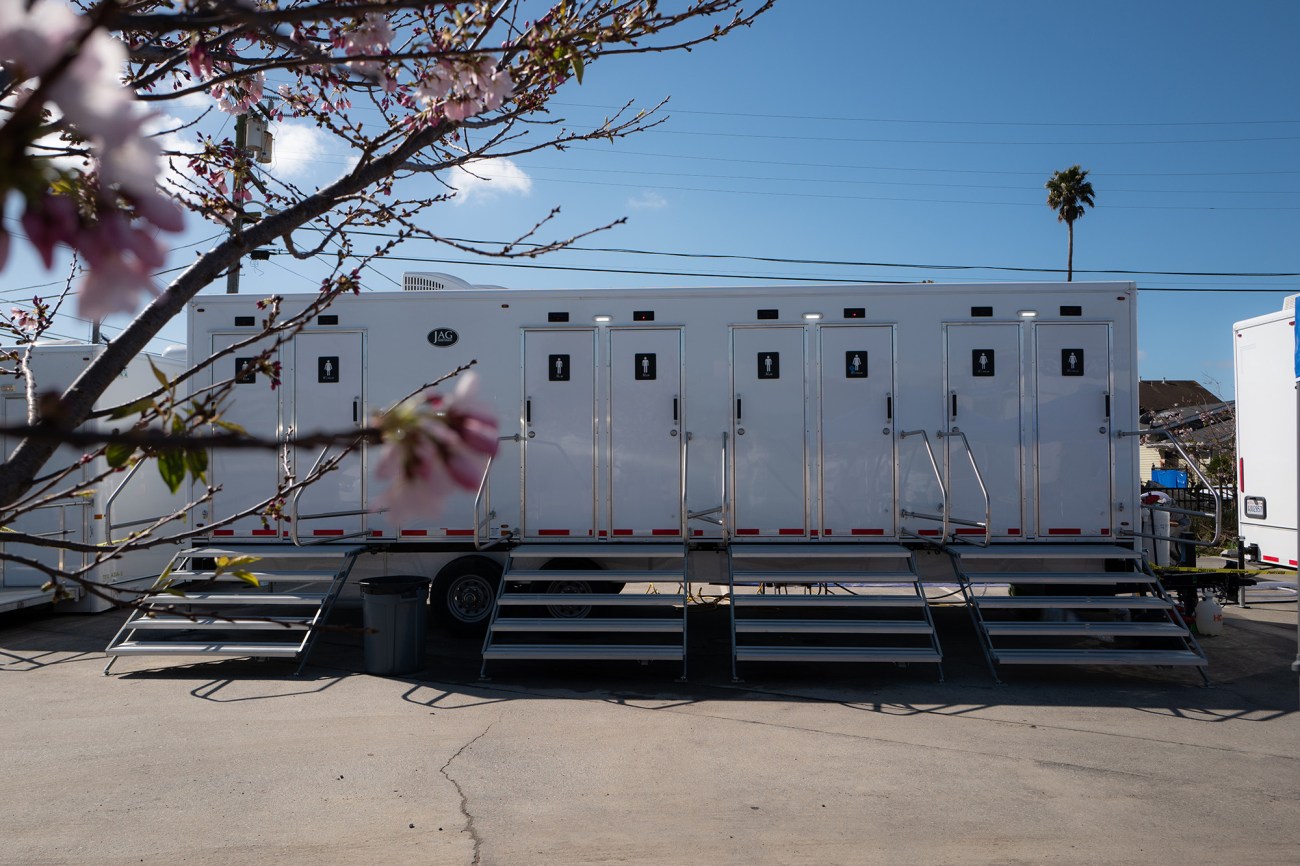
Bathrooms were installed for Pajaro residents as their sewage system was damaged during the flood.
Tiana Suber, a public information officer for FEMA, says the lack of Spanish translators is an ongoing issue. She noted that a Spanish-speaking public information officer visited the Village Park later to help families reschedule their appointment with an inspector if needed.
To help residents get back on their feet, the county has put a temporary moratorium on rent—the millions of dollars of damage in crop loss has left the predominantly farm-working community with a shortage of jobs.
At the Kennedy Ranch, a block away from the Village Trailer Park community, ranch supervisor Emilio Perez Anya says that 32 of the 34 acres of cropland are in ruins, under about seven feet of flood water. “We calculate about 30 million dollars in loss per acre,” says Anya. With this loss comes the inability to hire their usual estimated 100 workers—farmworkers, truck drivers, and supervisors. “We can’t plant this season, says Anya. “It’s done.” Now they are trying to save the pipes that were damaged by the mud, an additional expense that she hasn’t yet calculated.
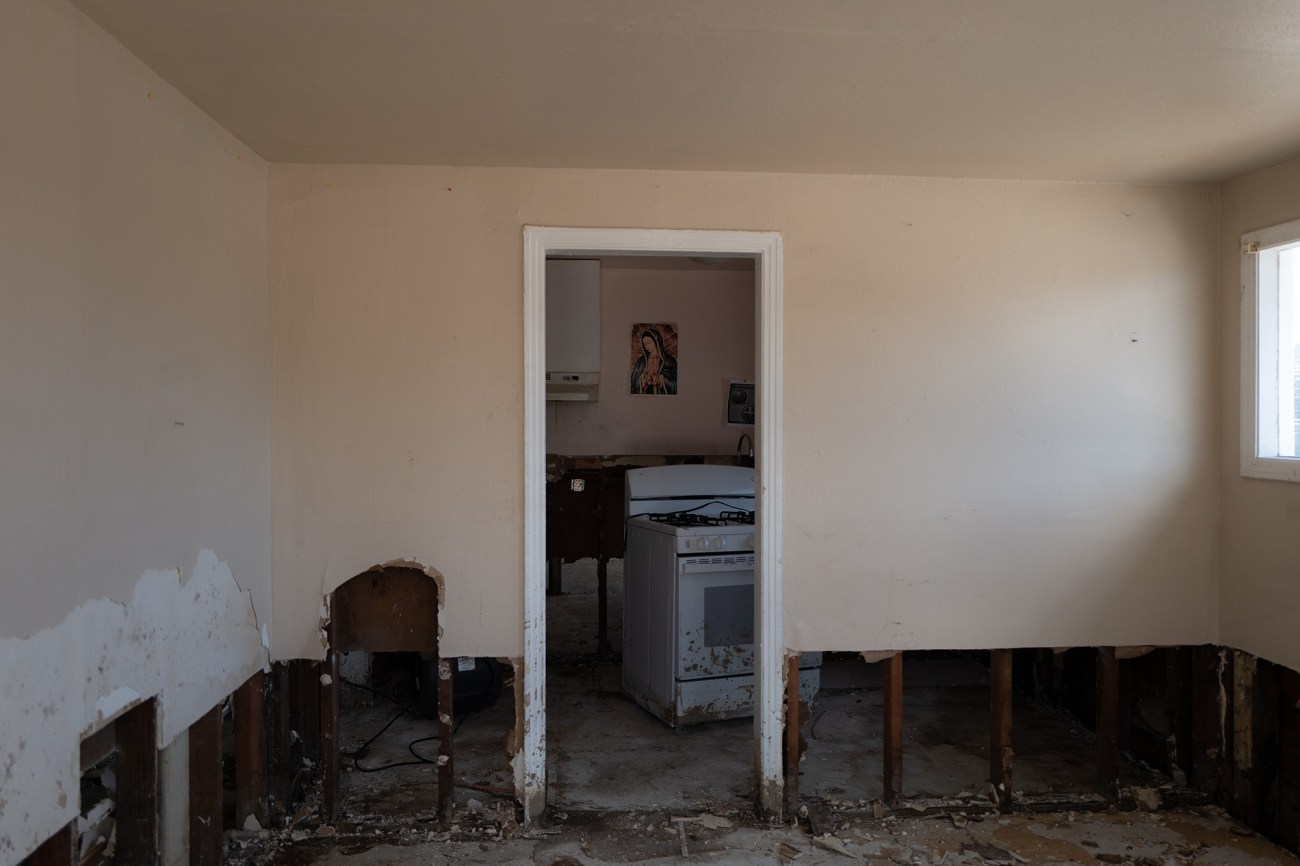
Homes on Salinas Rd were heavily damaged.
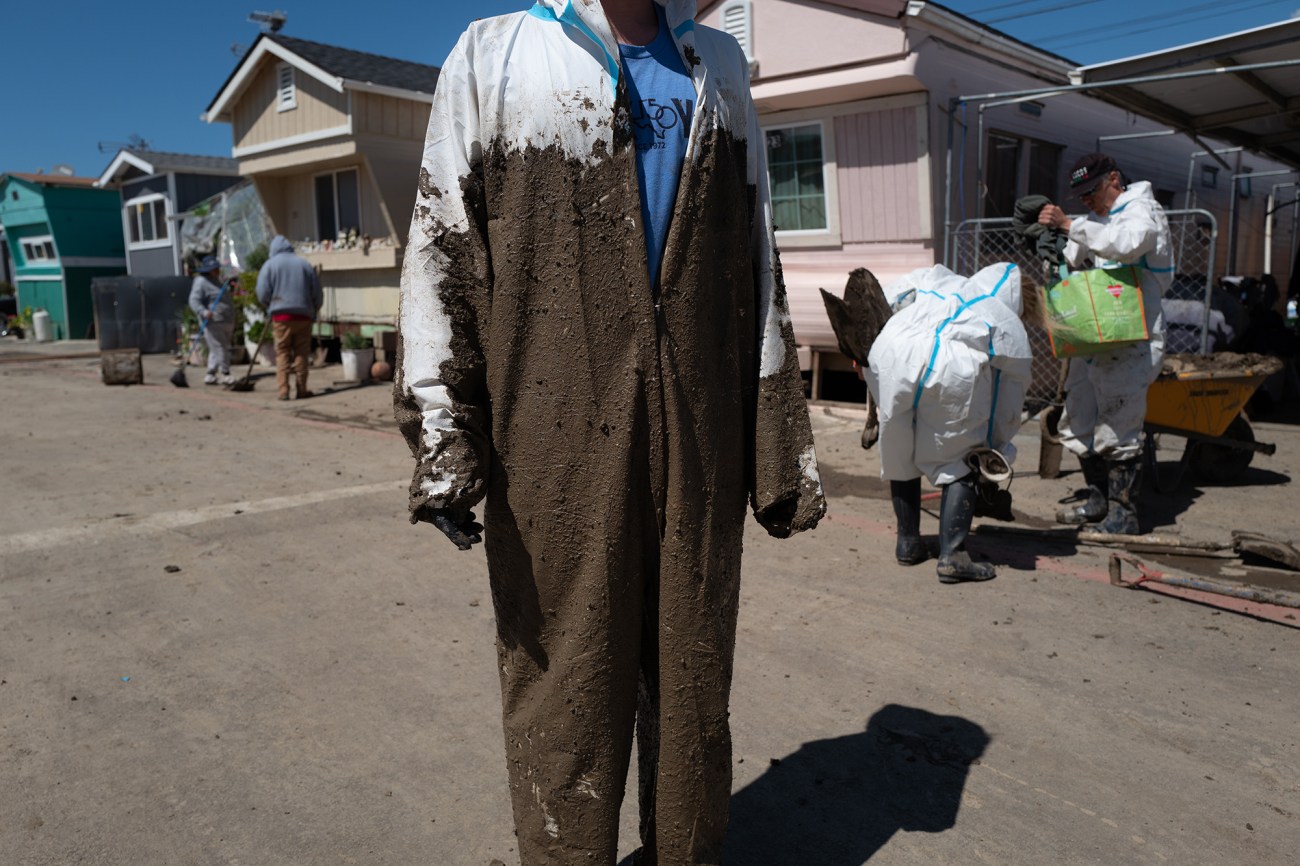
A volunteer is covered in mud after helping clean out resident’s homes at the Village Trailer Park.
As Pajaro residents begin to rebuild, the trauma lingers. Roman and her family are starting a new chapter with the help of their family, friends, and about $14,000 from FEMA. The money was nowhere near comparable to the property lost. When Carmen and Roman returned to Pajaro, they found their home was no longer livable. Roman and her family had no choice but to begin clearing it out, moving furniture, belongings, and memories onto the curb for the city to pick up. “I would watch my children move out pieces of furniture that I had worked all my life savings to have,” says Carmen. “After my husband left me, I got two jobs to be able to have a nice sofa, a nice dining table. And to watch my hard work piled up like a mountain on the side of the road makes one want to commit suicide.”
Roman’s colleagues have started a GoFundMe to help with the deposit on her new two-bedroom apartment. Friends have donated couches and beds. “I am grateful for the new space we are in now,” Roman says, “But in this gratitude, there is a lot of pain, because not only were we displaced from Pajaro, but within seconds we lost 47 years of our lives, our memories. If I was rich I would buy our house. That house was the only home we have ever had, it was where we were happy.”

Victoria Sabla lost the day care service that she had built in the back of her home.
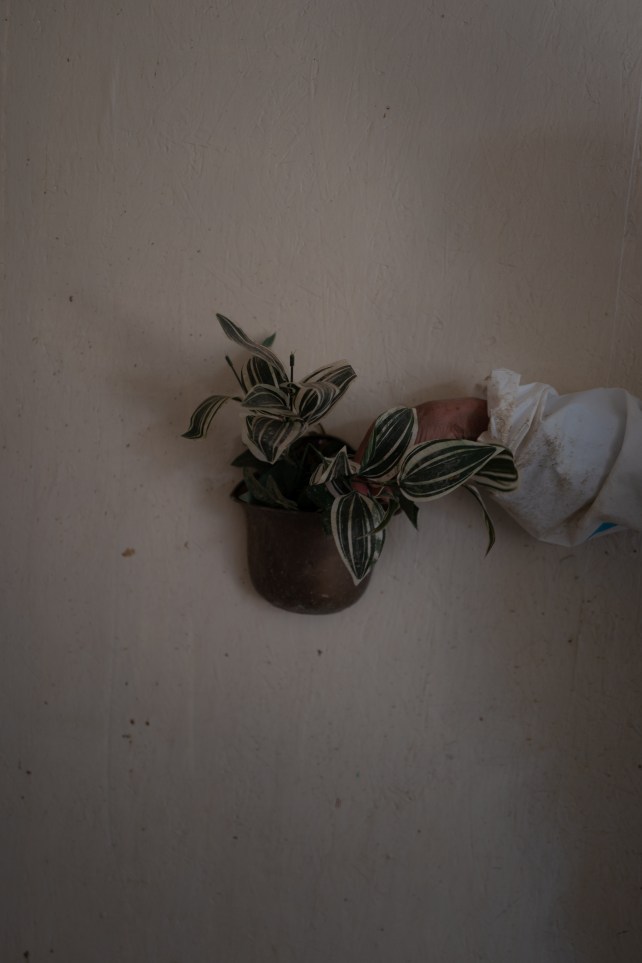
A plant hangs from the wall of Sabla’s day care.
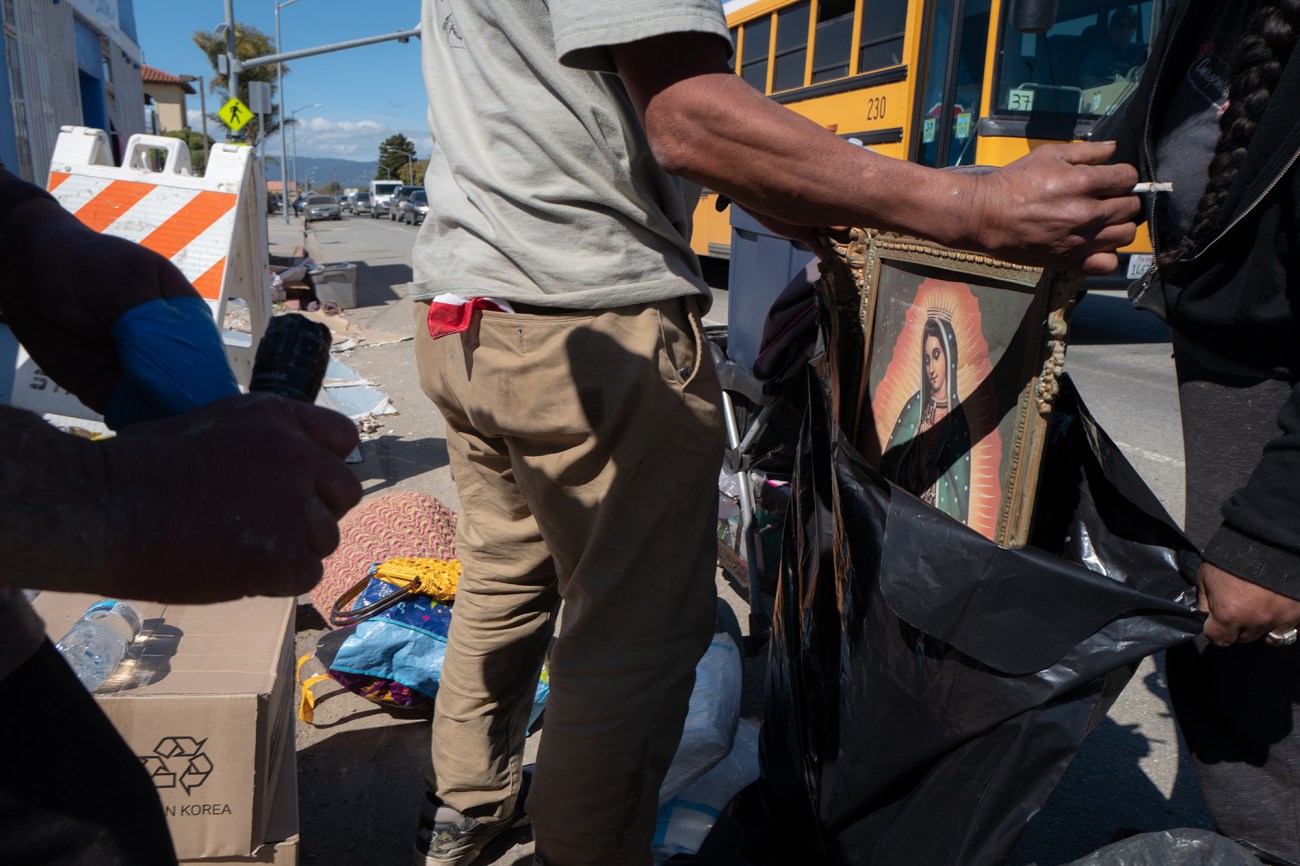
Residents save valuables they can after losing much of their belongings.
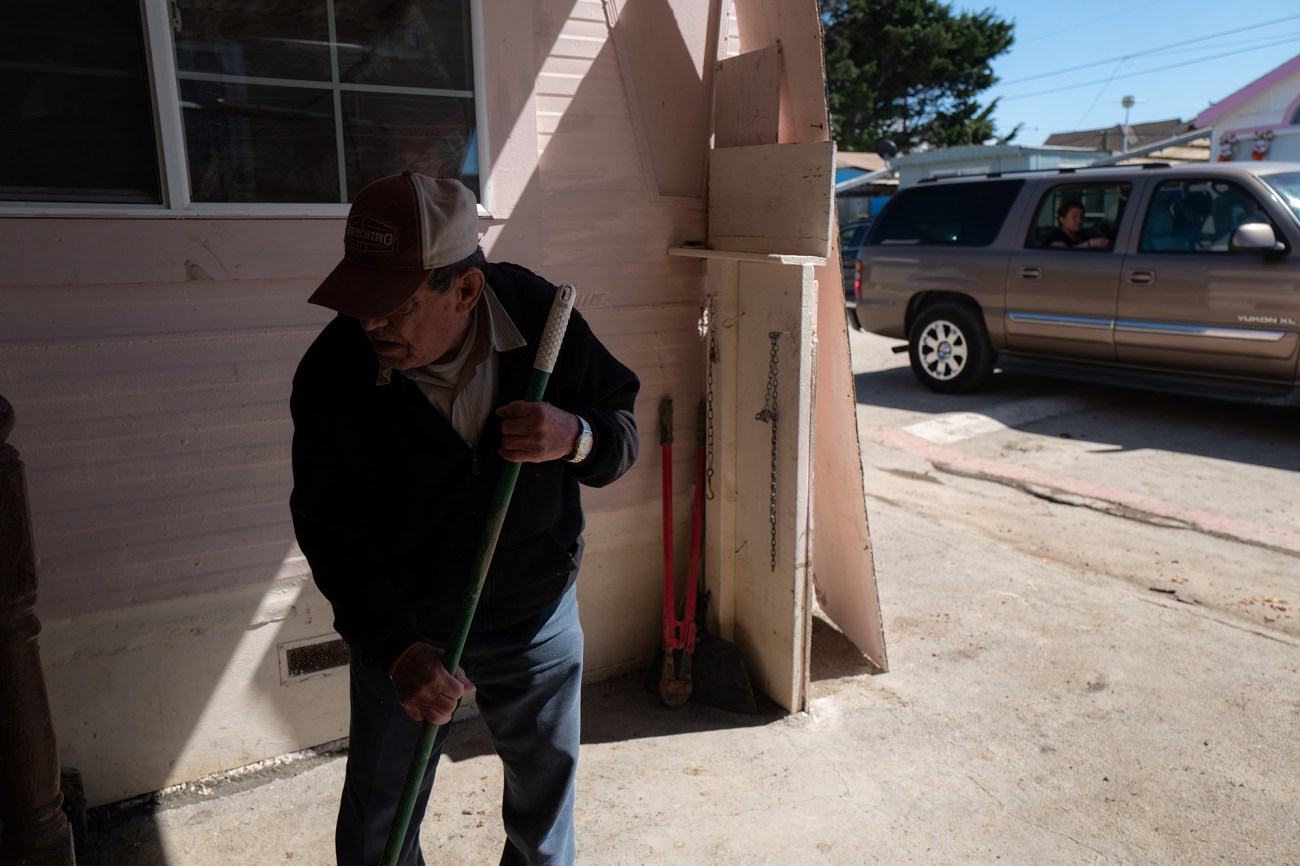
Cristobal Ayala sweeps the front of his trailer home as residents drive by donating food.
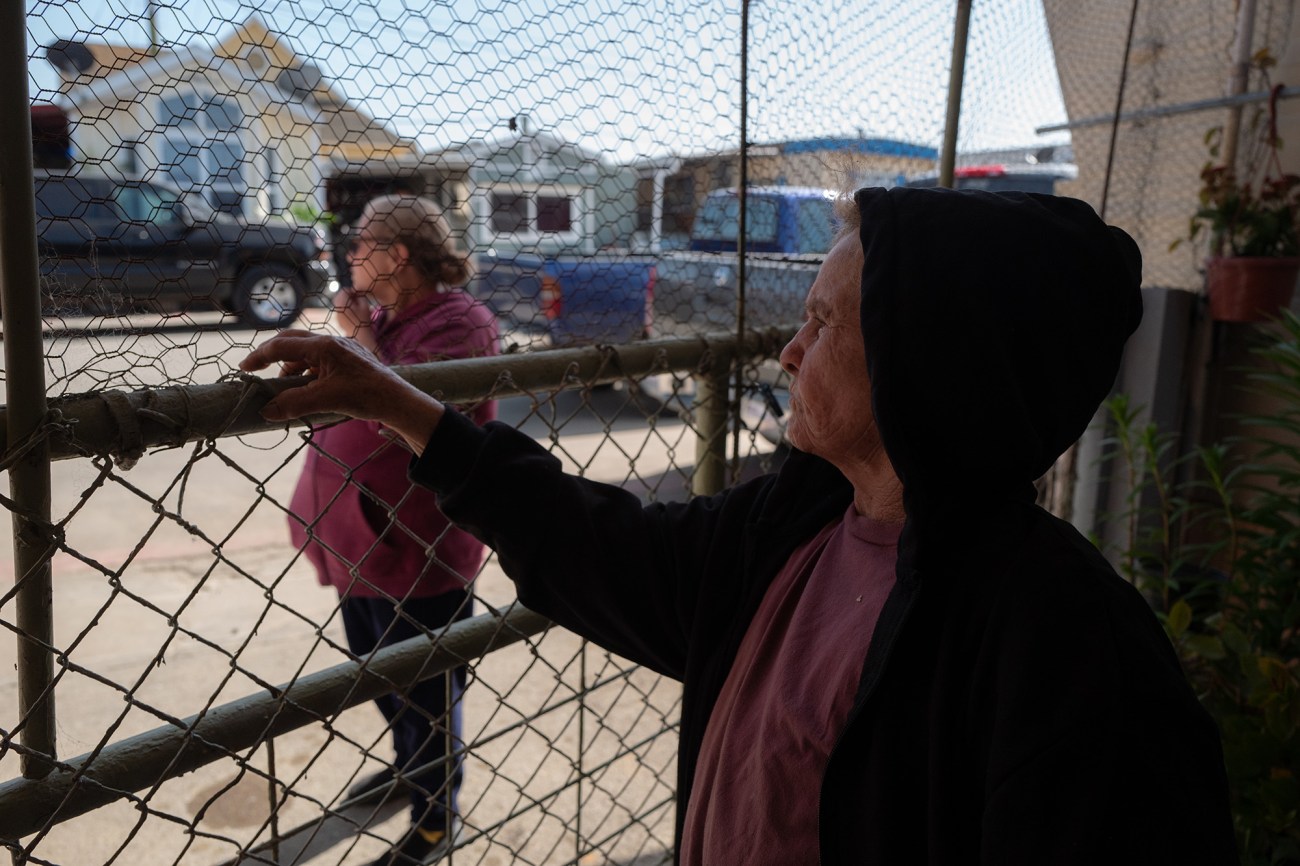
Elvira Fernandez looks out from her trailer home as her daughter returns from putting some of Elvira’s belonging onto the sidewalk for the city to pick up.

Crops begin to sprout off of San Juan Rd in late April. Numerous crops were ruined by the floods.
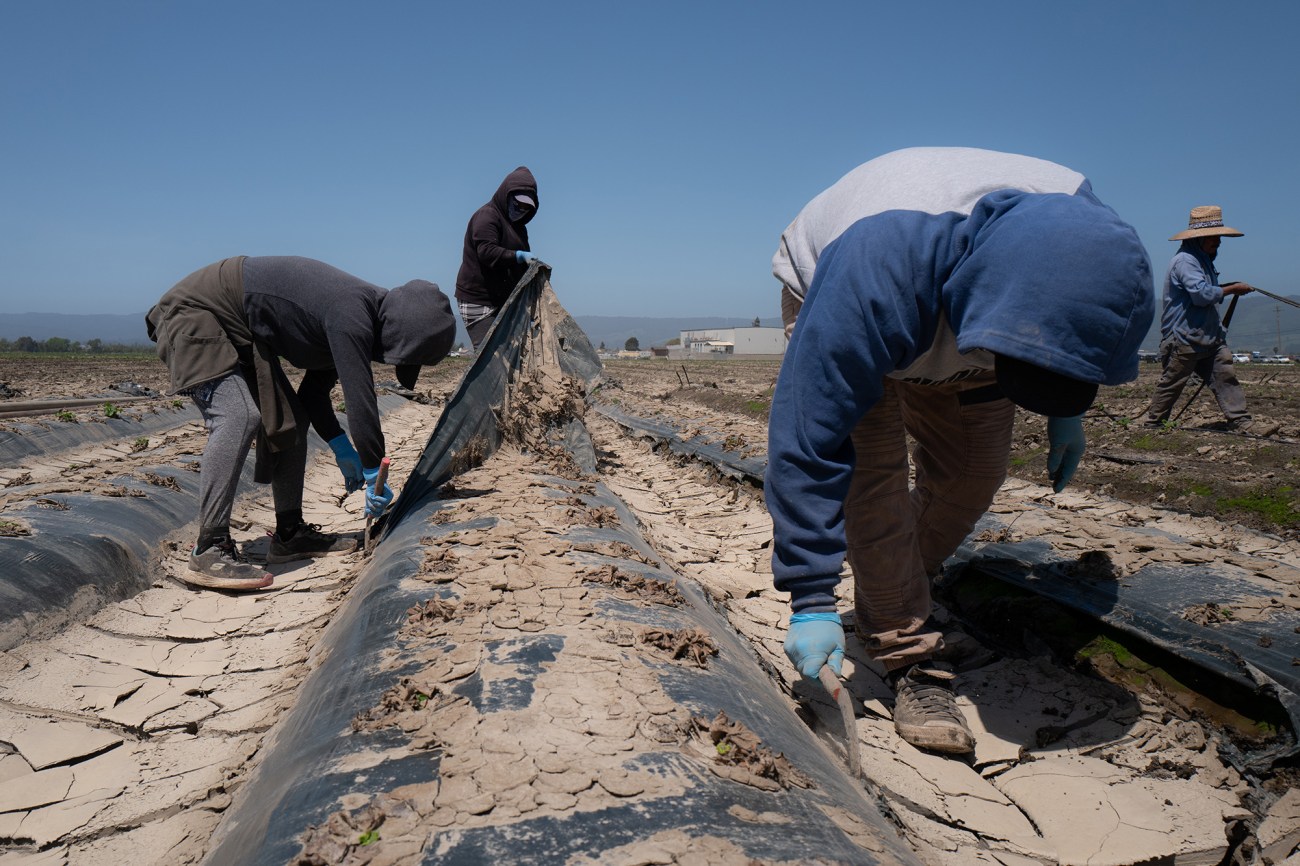
Farmworkers use sharp knives to cut the plastic from the ground that has been ruined for this year’s strawberry harvest.

A Mixtec farmworker piles plastic removed from the ground.
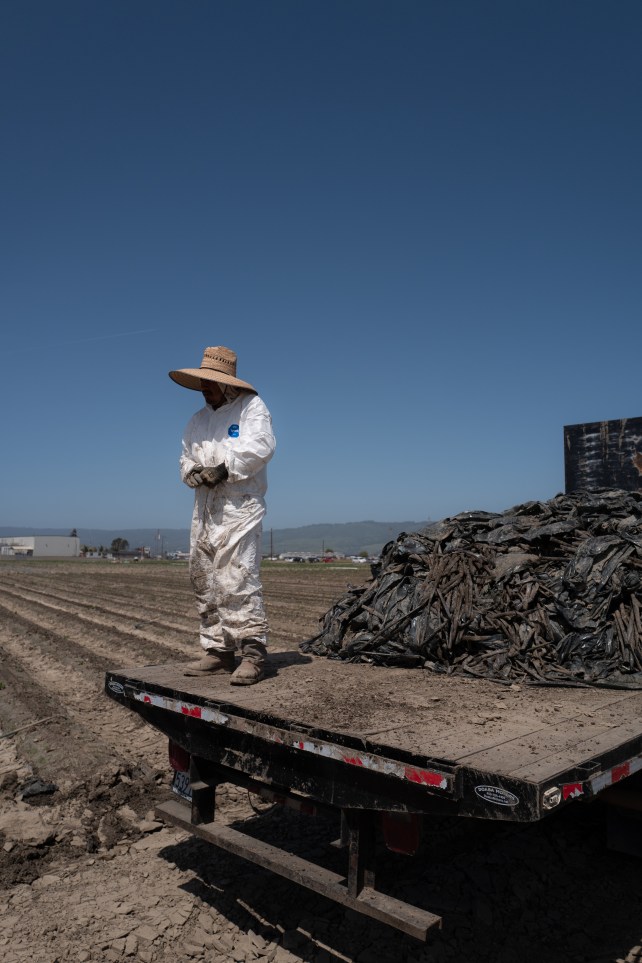
Some workers wear white hazmat suits to protect themselves from any toxins.

Residents of Pajaro gather to protest FEMA’s slow response.
This story was produced in collaboration with the Economic Hardship Reporting Project.

